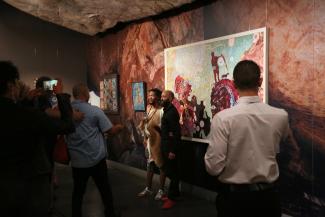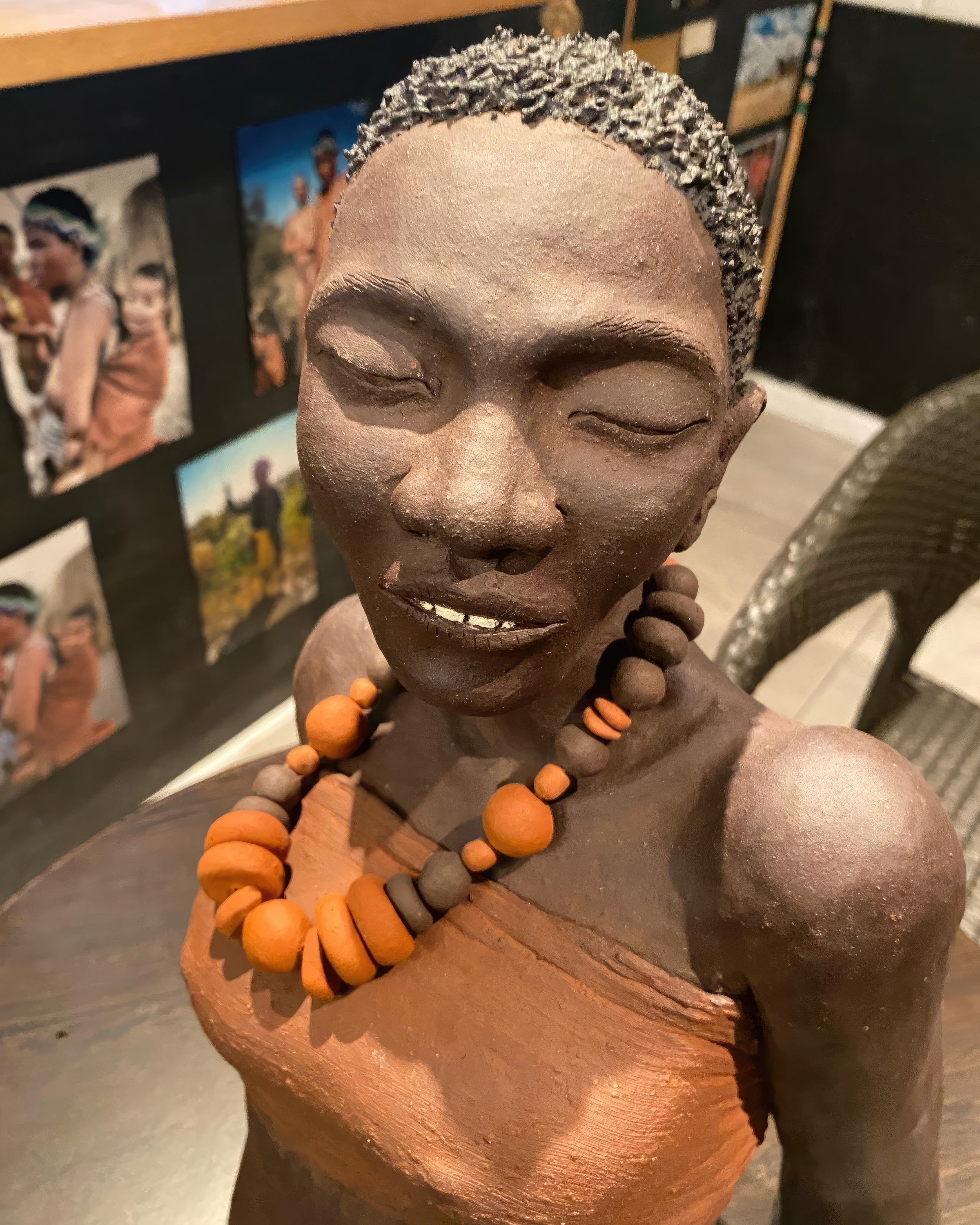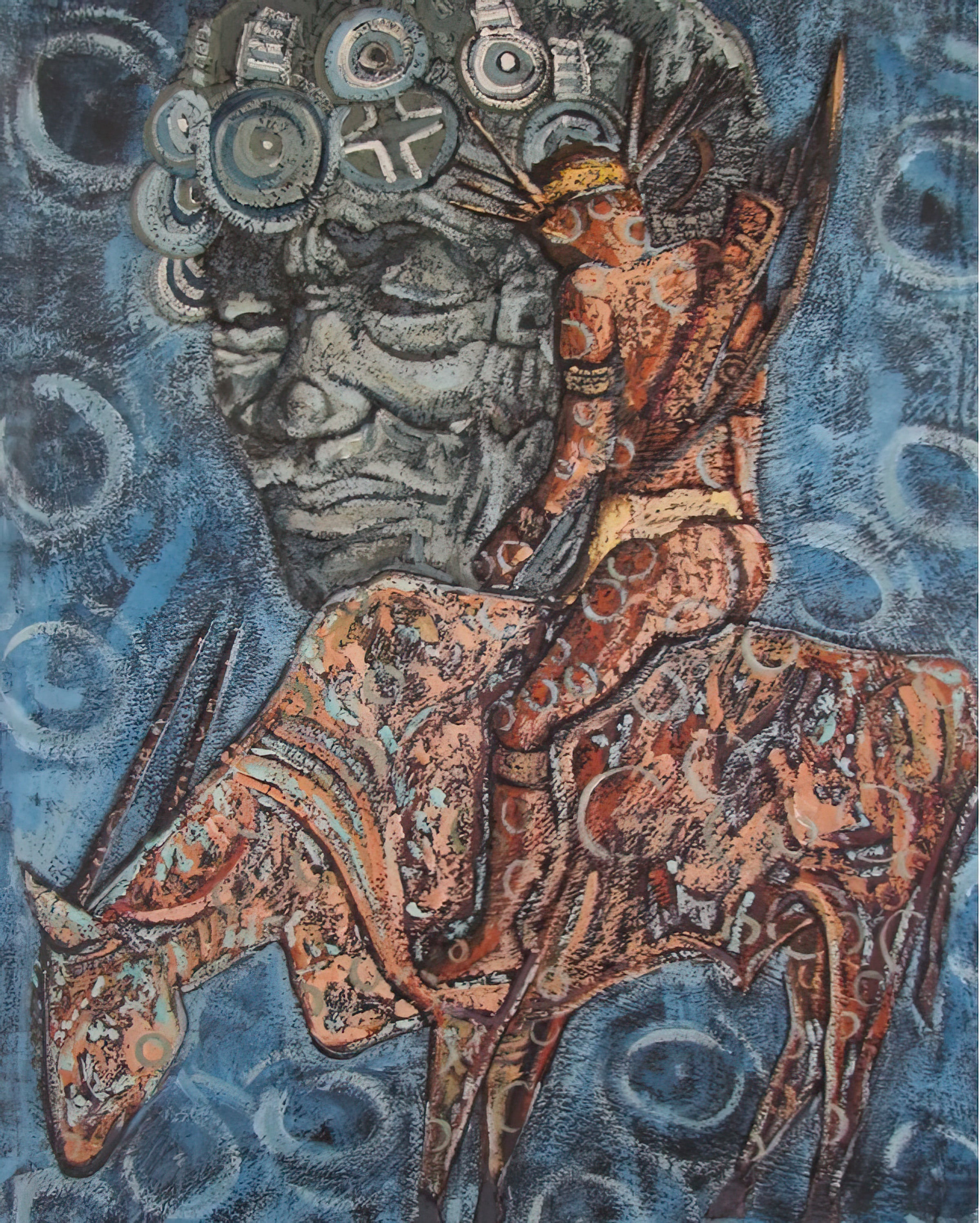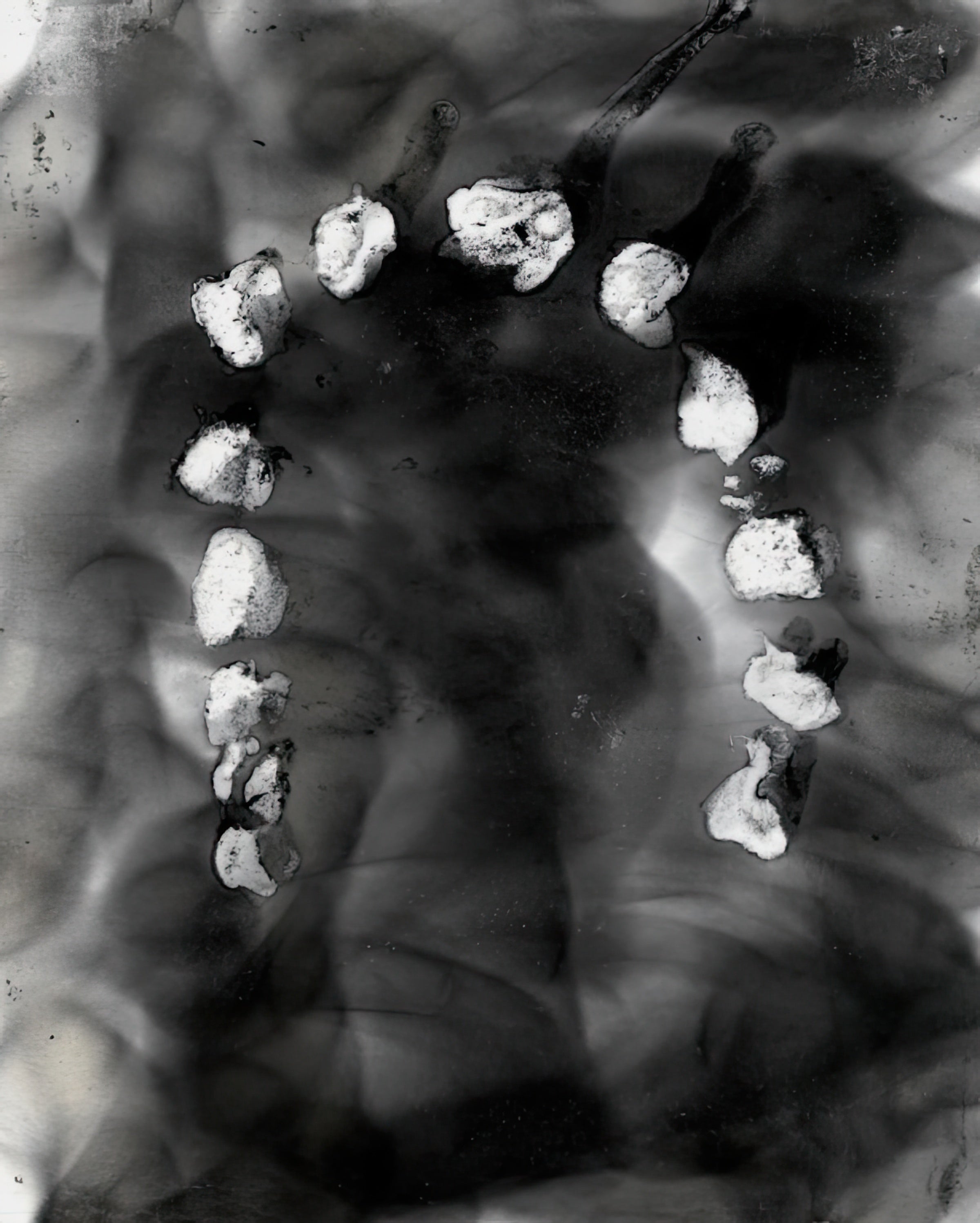
Lukretia Booysen (Griekwa, Nama) is an Indigenous changemaker and founder and curator of the Koena Art Institute, an Indigenous heritage preservation space, in Cape Town, South Africa. Her work is about more than preservation; it is a celebration of Indigenous people and their heritage. Booysen started in the arts about eight years ago after she was approached by an Indigenous artist who asked her to represent him, even though she knew little about art at the time. A week later, she sold her first art piece and began representing her first Indigenous artist, which became the beginning of the Koena Art Institute. Shaldon Ferris (Khoisan), Cultural Survival Indigenous Rights Radio Coordinator, recently spoke with Booysen.
Cultural Survival: Please tell us about your work.
Lukretia Booysen: The Koena Art Institute is an organization that celebrates Indigenous heritage through art. We are an Indigenous-owned, led, and managed organization that tells stories by Indigenous artists through the Indigenous lens and experience, informed by Indigenous knowledge systems. Currently in the art scene in South Africa, for Indigenous artists there is still a long way to go in terms of inclusion. It is an uphill struggle to get our work recognized as an art form and included in the broader artistic landscape. The Koena Art Institute, in conjunction with Iziko Museums and Iziko Co-Curator Annelize Kotze, has come together to put on an exhibition called “The Evolution of Indigenous Arts.”
Iziko Museums is an organization that has stood the test of time and is also a state entity that represents arts, history, natural history, and archaeology. They have played such a big role in preserving history. So for us as a startup organization, being able to work with this organization is really affirming. It is really a groundbreaking and historic event for us as an Indigenous organization. Being able to work with Iziko and learning and understanding how the environment functions has been such an amazing experience. The team, the staff, everybody has just made us feel so at home.
![]() “Icon” by Anthony Roach.
“Icon” by Anthony Roach.
CS: What is this exhibition about and why did it come to be?
LB: This exhibition talks about how our ancestors were some of the oldest-known artists in the world. This is prevalent in rock art across the globe. Yet, not much has been published on the evolution of Indigenous arts, what Indigenous artists are doing today, and how they relate to the art as Indigenous beings. This exhibition will be in the South African Museum where the Rock Art Institute is. It’s going to be the marriage of our ancestors’ art and stories and their traditions with the art and the works of current Indigenous descendants. It is extremely exciting and meaningful to us to have an organization like Iziko Museums, which is one of the most established arts structures in our country, exhibit our work. It is a six-month exhibition that will be part of the educational program, which is very exciting for us because a lot of young people will be able to see that our art forms have not died, our people have not died. We still practice and we still celebrate who we are as a people and as artists. I personally believe that we are a nation of artists. Our Indigenous South African Griekwa people are known for music. They’re known for moon celebrations. They are known for dance. They are known for art and storytelling.
 “Madam” by Andries Dirks.
“Madam” by Andries Dirks.
CS: Why do you consider this exhibition to be so important for the young generation?
LB: Historically in South Africa, we have been classified as Coloured. Because of that, a lot of our people have had some form of cultural erasure and disconnect from their ancestry and their history. So to have a child of Indigenous descent see artwork that represents them, it’s something that is really mind shifting, something that is really awakening, and something that not only speaks to cultural preservation but also to how we face and foster future generations who are Indigenous and who also are artists. How will they know that they have the right to celebrate that and their natural talent that comes through them as Indigenous artists and those stories that they will be able to tell? It is such a pleasure to be able to bring something like this to young minds and young children.
 “Rider” by Pierre Cloete (Khoi).
“Rider” by Pierre Cloete (Khoi).
CS: What is the objective of this exhibition?
LB: The objective is basically continuation. It is preservation, it is futurism, it is participation. It is inclusion and creating space for Indigenous stories that are being told by Indigenous Peoples.
It is with great honor and privilege that we celebrate Indigenous voices. It is with great honesty and artistic integrity that we have embarked on advancing the preservation of Indigenous heritage. The work is sometimes challenging, but it’s so affirming to our community that speaks from the periphery, and we speak with pride. We are joining so many that have come before us through this exhibition to lead the charge for self-performing through our Indigenous lens. The exhibition explores art by contemporary Indigenous descendants and shares how these stories, arts, and ideas that are intrinsic to ancestry have continued through time.
Creating this platform for sharing Indigenous stories and art has been at the forefront of the Koena Art Institute, so it’s a celebration. It’s a celebration of our history, which is merging with current realities and experiences by our artists, communities, and South Africans in general. This exhibition shows that Indigenous art is not stagnant. It is dynamic, it is complex, it’s fluid, and it’s not static. It changes every single day, all the time, in subtle, yet tangible ways.

CS: Is there a comparison to be made between ancient Indigenous art and modern Indigenous art?
LB: Indigenous art, which is derived from rock arts, and modern Indigenous art forms have so many similarities because it is all informed by the ancient. It is informed by our ancestors’ way of living, translating that in a contemporary context. It also speaks to the way that we live, the way that we understand, and the way that we express our work as artists, as musicians, as poets, as storytellers, as theater-makers, and as Indigenous beings overall.
The comparison that one can make is that you can see how this evolution is taking place. It is a beautiful experience because what we do today will determine what in 100 years will, too, be seen as ancestor work. So, in essence, we are the ancestors of tomorrow. Being able to do this exhibition in the way that we are doing it is a positioning. It is creating a historic landmark and sense of pride that generations from today, youth and people and the whole world, will be able to see how our stories evolved through time through art.
CS: Who are the featured artists for the “Evolution of Indigenous Art” exhibition?
LB: Andries Dirks, who is from Ribeeck Vallei; Anthony Roach from the Eastern Cape; Colin the Bushman from Worcester, Western Cape; Marlene Liebenberg from the Eastern Cape; Garth Erasmus from the Western Cape; Pierre Cloete from the Northern Cape; Stanley Grootboom from Knysna, Tsitsikama; Mamakwedza Mutasa from Zimbabwe; Ulrich Roberts also from the Northern Cape, Namakwaland; and Hendrius Vaalbooi from the Kalahari.
CS: Where is the exhibition? How long will it run?
LB: The exhibition will be held at the Rock Art Institute at the South African Museums from April 1 to August 31, 2023. It will be possible to visit during opening hours, subject to the electricity supply. When there is load shedding, unfortunately, viewers will not be able to come. But it is open to the public along with the education programs so children will get to experience the exhibition. Top: “Madam” by Andries Dirks. Middle: “Rider” by Pierre Cloete (Khoi). Bottom: “Icon” by Anthony Roach.
Photos courtesy of Koena Art Institute.
